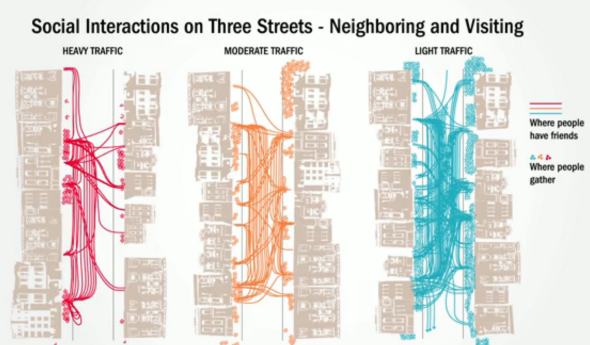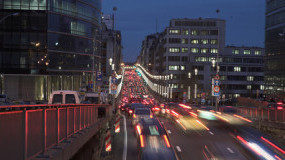Brussels is one of the most congested and least pedestrian-friendly cities in Europe. Behind the visible harm that is provoked by this situation of heavy car traffic, lies an unrecognized « invisible harm ». It deprives the people of Brussels from something that might be even more important that their money, time and nerves : it makes them lose opportunities to meet other people.

based on Appleyard, 1981
The first study which has shown evidence of a negative link between car traffic and social capital, was conducted more than 30 years ago, by an american urban designer called Donald Appleyard. His study, which was made in San Francisco, revealed that the people who lived in light traffic streets were more likely to meet their neightbours than those who lived in heavy traffic streets. Those who lived in light traffic streets were also more likely to have many friends around them and to have a larger vision of their « home territory » (i.e. they felt at home in their neighbourhood).

It’s quite logical, isn’t it ? A heavy traffic place (such as Chaussée de Louvain) is a place you want to escape from. And very light traffic place (such as Place Gaucheret) is a place that gives you energy, and a place you want to live in.
The protection and creation of livable streets is not simply a matter of increasing the comfort or safety of urban living. the street has other functions. As the place where most children grow up, it is a crucial mediator between the home and the outside world, where the child learns to confront strangers and environments on his own. It should be a receptive and reasonably safe environment that the child can explore, manipulate and use as a setting for all kinds of activities. The street has personal and social meaning for adults and old people, too. It symbolizes one’s position in the world almost as much as the house one lives in. And the social relations that take place on the streets, its potential for neighborliness and street life are values of urban life to be treasured » (Appleyard, 1981 : 9)




Pingbacks